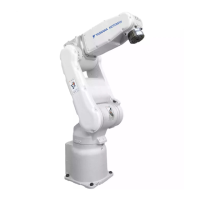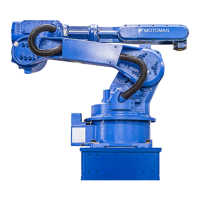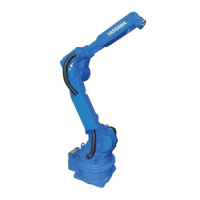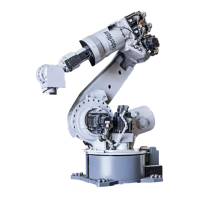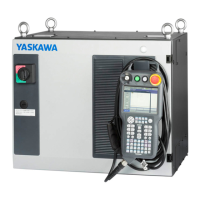3-10
155507-1CD
RE-CSO-A037
DX100
3 Teaching
3.2 Teaching Operation
Continuous Spline Curves
The manipulator moves through a path created by combining parabolic
curves. This differs from the circular interpolation in that steps with
identical points are not required at the junction between two spline curves.
When the parabolas overlap, a composite motion path is created.
<Play Speed>
• The play speed setting window is identical to that for the linear
interpolation.
• As with the circular interpolation, the speed taught at P2 is applied
from P1 to P2, and the speed taught at P3 is applied from P2 to P3.
Table 3-4: Interpolation Type for Continuous Spline Curves
Point Interpolation
Type
Instruction
P0 Joint or
Linear
MOVJ
MOVL
P1
to
P5
Spline MOVS
P6 Joint or
Linear
MOVJ
MOVL
Teach points so that the distances between the three points
are roughly equal. If there is any significant difference, an
error will occur on playback and the manipulator may
operate in an unexpected, dangerous manner. Ensure that
the ratio of distances between steps m:n is within the range
of 0.25 to 0.75.
P0 P1
P5 P6
P2
P3
P4
Identical-point
step not required

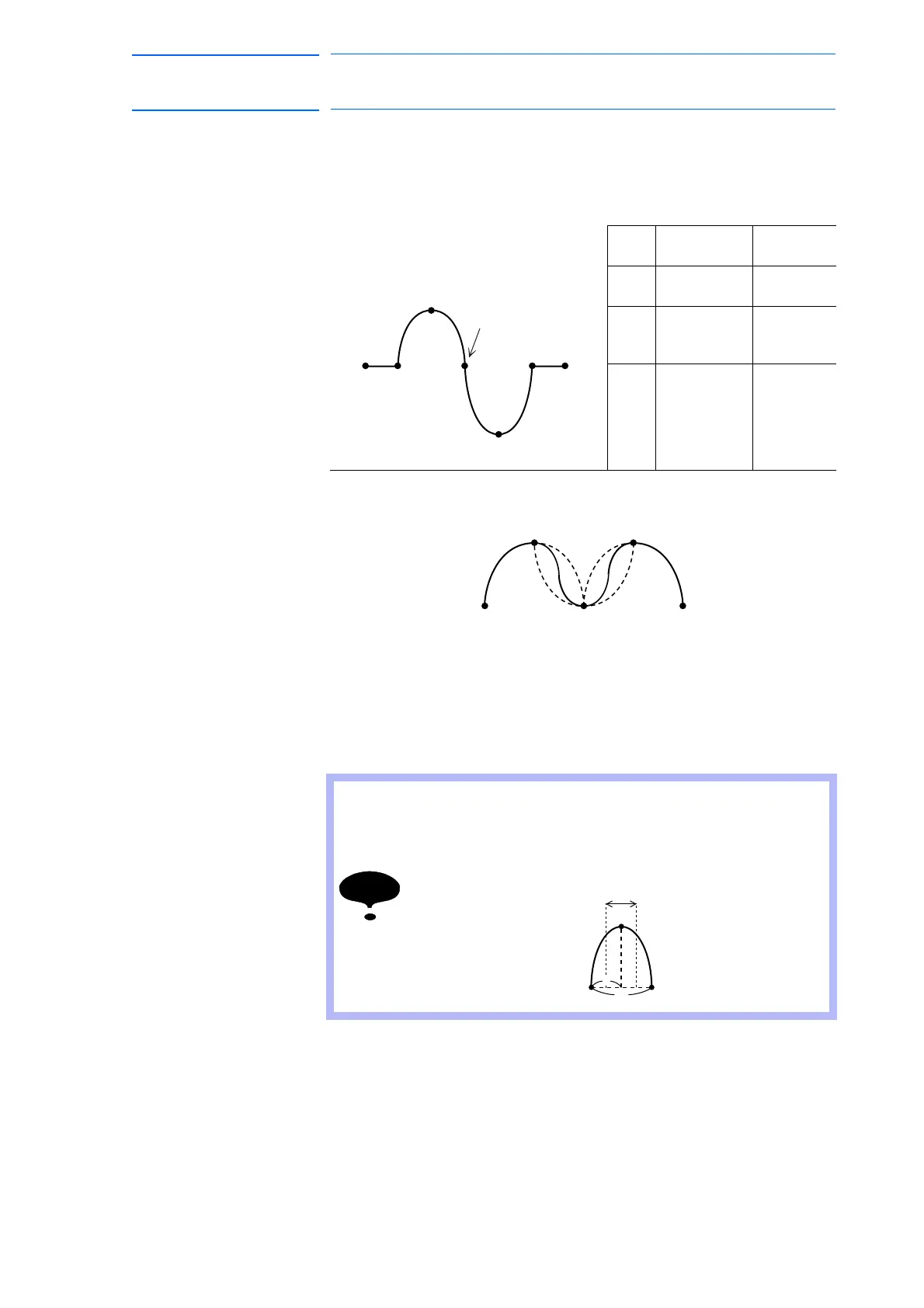